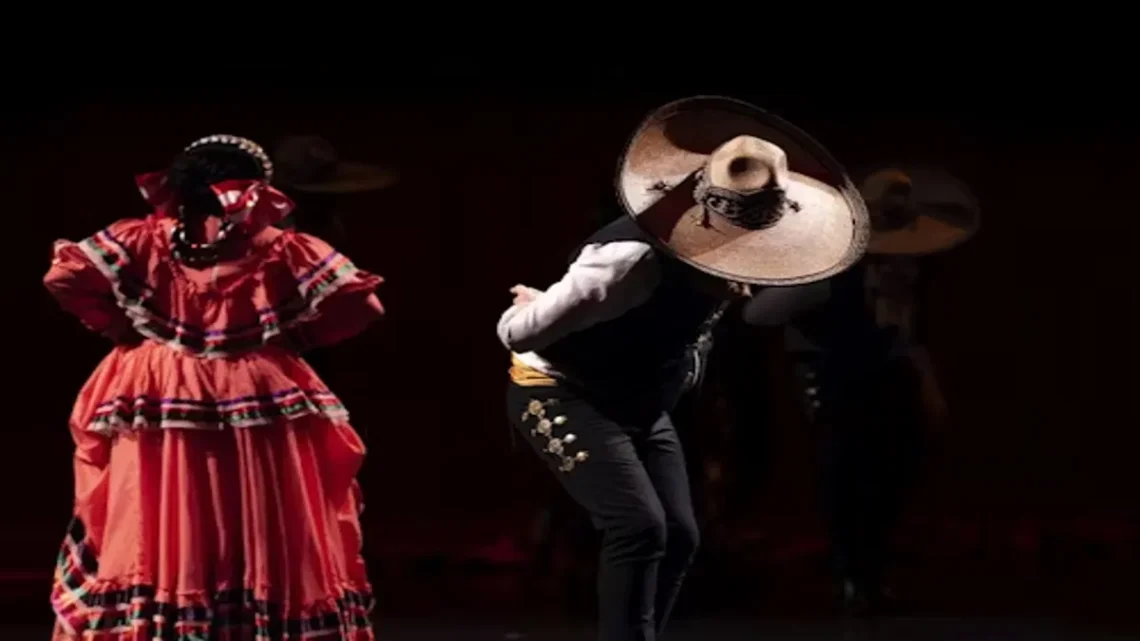When readers search for “soleás” they want a clear, usable answer fast: soleás (plural of soleá) are one of flamenco’s foundational palos — deep, solemn songs and dances set to a twelve-beat compás that foregrounds lament, dignity, and intense emotional compression. Within the first hundred words: soleás are slow, profound flamenco forms whose patterns of accent (the compás) and traditional lyrics make them central to the art’s expressive range; they are performed solo or in small groups, by singers (cantaores), guitarists (tocaores) and dancers (bailaores), and they function as both musical form and moral gesture — a public speech about sorrow, resistance, and survival. This article will map the soleá from history to practice, explain its rhythmic logic in plain terms, profile stylistic variations, and offer practical guidance for listeners, students, and curious travelers who want to hear these songs with informed ears.
Flamenco’s popular image often stops at fast footwork and glittering dresses, but soleás are the art form’s reflective core: a place where silence and space matter as much as voice and rhythm. They can be a single anguished line of text, repeated and reframed until the listener is transformed; or they can be a long, arching performance in which guitar, voice and body invent a moral landscape. In the sections that follow we will look at where soleás come from, how a compás works, the varieties of soleá across Andalusia, the relationship between lyrics and improvisation, canonical recordings and performers to study, and how non-native students can approach this demanding art with humility and technique.
What Is a Soleá? A Simple Definition and a Second Look
At its most practical, a soleá is a flamenco palo (style) characterized by a 12-beat rhythmic cycle — the compás — with accents conventionally felt on beats 3, 6, 8, 10 and 12 (counted often as 1 2 3 4 5 6 7 8 9 10 11 12 where emphasis lands on 3, 6, 8, 10, 12). Unlike the fast, celebratory alegrías or the strolling cadence of bulerías, soleás are slow to moderate in tempo and notable for their gravity. The words of a soleá are often terse: short verses, repeated with subtle melodic and rhythmic variation, building emotional pressure through iteration and space. The guitar provides both harmonic scaffolding and rhythmic punctuation; the dancer, when present, interprets the vocal line with measured, often austere movement.
But a second look reveals how a soleá functions socially. Historically performed in cafés cantantes, juerga circles, and private gatherings, soleás afforded singers a space to narrate personal or communal suffering and to test the limits of human feeling in public. For listeners, the experience is less entertainment than ritual: the singer’s cry must be met with responsorial clapping (palmas), measured silence, or Feria-like exclamations (jaleos) when appropriate. To appreciate a soleá you must train both ear and body: feel the compás, listen for the micro-timing that stretches beats, and allow emotional stillness to register. The art asks patience; it rewards with depth.
A Short History: From Folk Roots to Concert Stage
Soleás emerged in the 19th century’s ferment of Andalusian music — a world shaped by Gypsy (Gitano), Moorish, Jewish and Iberian rural traditions. Scholars trace lineages to earlier songs of lament and to the cante jondo, the “deep song” that Federico García Lorca later canonized as flamenco’s spiritual core. As flamenco migrated from private patios and village gatherings into urban cafés cantantes in Seville, Cádiz and Málaga, the soleá became formalized as a repertory item while retaining improvisatory freedom. Singers developed repertories of letras (verses) that could be reshaped each performance, and guitarists evolved techniques to accompany — and sometimes provoke — the singer.
In the twentieth century the soleá moved from local cafés into concert halls and recorded media, where artists like Manolo Caracol, La Niña de los Peines and Tomás Pavón refined their interpretations. Recordings made the palo accessible to wider audiences but also forced performers to negotiate between personal improvisation and the permanence of discs. That tension—between an improvisatory tradition and recorded fixity—remains part of flamenco’s modern life.
The Compás: How to Hear the Twelve Beats
Understanding a soleá begins with the compás. While texts and music theory can seem abstract, the compás is best felt physically. The canonical count often used by practitioners is: 1 2 3 4 5 6 7 8 9 10 11 12, but the accents experienced with hands or feet create the identity of the palo: [EMPH on 3], [EMPH on 6], [EMPH on 8], [EMPH on 10], [EMPH on 12]. Musicians and dancers learn to feel where the pulse is pushed forward or delayed — the microtiming, or rubato, that gives a soleá its breathless yearning.
A practical listening exercise: tap your foot evenly for twelve clicks. Now clap louder on 3, 6, 8, 10 and 12. With time, your body will lock into the pattern. Guitarists often play compás with rasgueados (strummed chords), thumbed bass lines, and golpes (percussive taps on the guitar body) while singers overlay melismas and lyrical meters. The compás is both constraint and creative field: it imposes a structure but creates endless expressive possibility.
Bulleted notes on compás practice:
• Count aloud slowly in cycles of twelve until the accents feel natural.
• Practice with a metronome set to a slow tempo (50–65 bpm) subdividing 12 beats.
• Clap palmas in closed (soft) and open (loud) forms to hear how dynamics shape movement.
• Listen to master recordings and tap along — noticing where singers delay syllables against the guitar.
Structure of a Soleá Performance: Voice, Guitar, and Dance
A typical performance of a soleá can take several shapes: a purely vocal solo, a guitar-and-voice duo, or a staged trio with dancer. In each configuration the roles are distinct though interdependent. The singer is the narrative core, delivering letras with tonal and dynamic variation; the guitarist provides harmonic support and compás; the dancer, if present, makes visible the poem — translating vocal micro-rhythms into footwork and posture.
Singers often prepare a series of versos (verses) and repeat them, varying melodic ornaments and rhythmic placement to build intensity. A common arc begins with shorter verses and sparse compás, gradually layering ornament and percussive interplay until an emotional apex, after which the music returns to a calmer state for closure. The guitarist supports with falsetas — short melodic interludes between sung lines — which both soothe and provoke the cantaor.
Lyrics, Themes, and Poetic Economy
Soleá lyrics are economical and often elliptical. Themes revolve around love and loss, death, honor, exile, pride, and the quotidian hardships of life. The most powerful letras read like aphorisms: a few lines that, repeated and reframed, reveal deeper shades of meaning. The economy of language forces singers to rely on vocal color, melisma and timing to parse emotional complexity.
Example lyrical motifs found in soleás:
• The absent or cruel beloved as source of metaphysical pain.
• Social marginality and the singer’s pride in suffering.
• Natural metaphors — moon, sea, night — as landscapes of feeling.
• Death as companion, often personified.
These compact themes explain why the soleá works as ritual: it creates dense meaning through repetition rather than long narrative. The listener is meant to inhabit the refrain until it opens like a cave of meaning.
Regional Variants: Soleá de Cádiz, Soleá por Bandolá, Soleá de Alcalá
Soleás are not monolithic. Regional flavors develop through local history, dialect and performance practice. A few canonical variants include:
• Soleá de Cádiz: often lighter in melodic contour, with quicker ornamentation and a local accent in phrasing.
• Soleá por Bandolá: a rhythmic variant emphasizing a lilting guitar accompaniment that can feel more song-like.
• Soleá de Alcalá: associated with a particular melodic dialect and notable for a certain austere, mournful quality.
Each variant preserves the central compás but colors it with local inflections — different melismas, preferred guitar voicings, and even slightly shifted accentuation. For students, immersion in regional recordings helps internalize these subtleties.
Notable Singers and Recordings to Study
Some historical performers are essential listening for anyone wishing to understand soleás deeply. While flamenco pedagogy debates canonical lists, a practical starter guide includes:
• La Niña de los Peines (Pastora Pavón) — landmark phrasing, expansive repertory.
• Tomás Pavón — canonical for cante jondo phrasing and guttural intensity.
• Manolo Caracol — raw emotional delivery and theatrical presence.
• Pepe Marchena — for more ornamented, lyrical approaches (note: controversial among purists).
• Modern interpreters: Camarón de la Isla, Enrique Morente, and Mayte Martín, each bringing personal reinvention.
Listening task: pick two recordings of the same soleá letra by different singers. Notice differences in tempo, ornamentation, and where each singer chooses to delay or rush a phrase. These microchoices define personal style.
Guitar Technique: Compás, Falsetas, and Accompaniment
Guitarists in soleá must accomplish multiple tasks simultaneously: maintain compás, provide harmonic color, and answer or suggest melodic lines. Core techniques include:
• Palmas integration — locking the guitar’s rhythmic drive to hand clapping.
• Golpe and rasgueado — percussive and strummed textures supporting the voice.
• Arpeggio vs rasgueo choices — different textures for verses and interludes.
• Falsetas — brief melodic solos offering contrast.
A guitarist’s responsibility is to create a secure rhythmic and harmonic platform while leaving space for the singer’s improvisation. The best accompanists listen more than they play, allowing the cantaor’s breath and timing to lead.
The Dancer’s Role: Posture, Soleá Por Bulerías, and Footwork
When performed with dance, a soleá is measured and ceremonious. The dancer’s footwork (compás de pie) tends toward weighted, deliberate steps, punctuating accent points and mirroring the singer’s phrasing. The dancer also uses silence and stillness — held moments that increase dramatic tension.
Common dance elements:
• Compás-based palmas and zapateado (footwork) aligning with guitar accents.
• Brace positions — torso held upright to communicate dignity.
• Use of arms (braceo) and hands (floreo) to shape phrases.
Soleá dance is often described as “walking with feeling”: less flamboyance, more inward intensity.
Improvisation and Structure: Where Freedom Meets Form
A central paradox in flamenco — and in soleá especially — is how improvisation occurs inside a rigid rhythmic structure. The compás is the grammar; improvisation is the poetry. Performers improvise via ornamentation, timing delays, and melodic invention, but always with respect to the compás points that make the form intelligible to other musicians and listeners. The tension between obedience to compás and personal expression is the art’s engine.
Pedagogical tip: practice improvising one vocal phrase while the guitar maintains strict compás. This trains both rhythmic independence and expressive nuance.
Social Context: Juerga, Tablao, and Concert Hall
Soleás live in different social settings. A juerga (informal party) accepts extended improvisation and communal participation; a tablao (venue for flamenco) often involves more theatrical presentation, sometimes with dancers and lighting; a concert hall can exalt the soleá to a meditative listening experience, highlighted by production values. Each context changes the performance’s scale but not its core demands for authenticity and emotional truth.
Learning Soleás: Practical Steps for Students
For non-Gitanos or outsiders approaching soleás, the path requires humility, listening, and disciplined practice:
• Start by learning compás physically — clapping and counting slowly.
• Memorize canonical letras and sing them unaccompanied to focus on phrasing.
• Study guitar compás patterns with a teacher before attempting accompaniment.
• Attend juerga sessions to witness spontaneous interaction.
• Practice silence: learn when not to sing or play — space is expressive.
• Work on microtiming: practice delaying a syllable slightly against the compás and observe the emotional effect.
Respect for tradition matters; entry into flamenco’s deeper forms should be done with cultural sensitivity and mentorship.
The Language of Soleá: Andalusian Dialect and Poetic Voice
Soleá lyrics often use Andalusian dialect and idiomatic expressions that carry local cultural resonance. Translating a soleá into another language risks losing not just literal meaning but the song’s connotative density — the small words and inflections that signal pride, irony, or fatalism. For scholars or translators, footnotes and commentaries become essential tools.
Contemporary Directions: Fusion, Reinvention, and Preservation
In recent decades some artists have fused soleás with jazz, classical harmony, and electronic elements, creating hybrid works that expand the palate while inviting debate from purists. Simultaneously, academic programs, conservatories, and informal lineages of teaching work to preserve fundamental compás and letras. The future of soleás likely rests in a balanced ecosystem: living renewal that honors roots.
Performance Etiquette: Listening vs. Applause
If you attend a live soleá, etiquette matters. Unlike pop applause, flamenco responses are calibrated: sustained silence, measured palmas, or discrete cries of “¡olé!” are used to endorse the artist at certain moments. Shouting or rhythmic clapping at inappropriate times disrupts both performer and compás. The audience is a participant in the performance — its disciplined attention shapes the art.
Two Practical Tables for Students and Listeners
| Quick Guide to Compás Counting | Action |
|---|---|
| 1 2 3 (accent) | Strong clap or foot tap on 3 |
| 4 5 6 (accent) | Strong clap or foot tap on 6 |
| 7 8 (accent) | Accent on 8, slight pause after |
| 9 10 (accent) | Accent on 10, prepare for 11 |
| 11 12 (accent) | Accent on 12, resolves to 1 |
| Recommended Listening Roadmap | Why it matters |
|---|---|
| Start: simple compás exercises (recordings) | Internalize beat before melody |
| Then: solo cantaor recordings (pastora/tomás) | Learn phrasing and tonos |
| Next: guitar-cantaor duets | Hear accompaniment rules |
| Later: dance-inclusive recordings | Connect footwork with compás |
| Finally: live juerga experience | See improvisation and social flow |
Quotes: Voices That Capture Soleá’s Soul
“Cante jondo is not a song — it is a wound that sings.” — paraphrasing the spirit of Lorca’s idea about flamenco’s depth.
“A single sung line, repeated ten times, teaches the listener a new grammar of grief.” — a flamenco scholar reflecting on repetition and meaning.
“In soleá you feel life’s weight, but you also learn how to hold it upright.” — a contemporary cantaora describing dignity in cante.
“Compás is the language of the people; without it, emotion is shapeless.” — a veteran guitarist on rhythm as grammar.
Common Mistakes and Misconceptions
Beginners often try to speed up soleás, treating them like bulerías; the result is a loss of gravity. Another error is over-ornamentation: decorating every syllable removes silence’s power. Guitarists may also confuse rhythmic support with melodic showmanship — the accompanist’s role is to serve the cantaor. Finally, treating soleás as tourist spectacle rather than living cultural expression flattens its meaning.
The Ethics of Cultural Exchange
Non-Spanish practitioners must approach soleás respectfully: learn from teachers embedded in the tradition, credit sources, and avoid commodifying the form. Flamenco’s Gypsy roots and history of marginalization call for sensitivity; appropriation without acknowledgment reproduces injustice. Genuine exchange enriches both guest and host when reciprocity guides it.
Conclusion: Why Soleás Matter Today
Soleás survive because they name a human truth: sorrow, pride, endurance, and dignity can be shared publicly and transformed into art. Their medium — economy of words, rigorous compás, and intense delivery — trains both performer and listener in patience and attention. In a fast culture, soleás demand deceleration. They ask us to listen through repetition, to feel through delay, and to be held by a rhythm that is older than momentary sensation.
For anyone who wants to learn music that also trains ethical attention, the soleá offers a rare curriculum: discipline, humility, and emotional clarity. Whether you are a musician, dancer, or attentive listener, approaching soleás with curiosity and respect opens a door into flamenco’s deepest pulse.
FAQs
- What is the basic rhythm pattern of a soleá?
A soleá uses a 12-beat compás with accents typically on 3, 6, 8, 10 and 12; practicing physical counting is essential. - Can solo guitar handle a soleá without a singer?
Yes—instrumental soleás exist where the guitar outlines compás and melodic content; however, the vocal dimension often completes the emotional arc. - How long does it take to learn compás?
Basic compás feeling can be acquired within weeks of disciplined practice; musical nuance and improvisation require years of immersion. - Are soleás only sad songs?
While they frequently express sorrow or gravity, soleás also carry pride, defiance and catharsis—emotional complexity beyond sadness. - Is it acceptable for outsiders to perform soleás?
Yes, with proper study, humility and mentorship from tradition-bearers. Ethical exchange and accurate crediting are essential.






